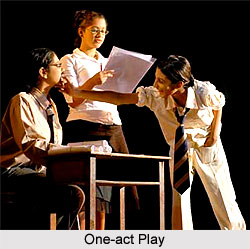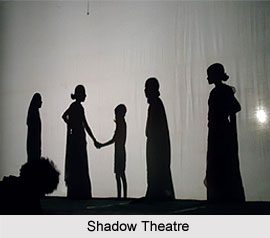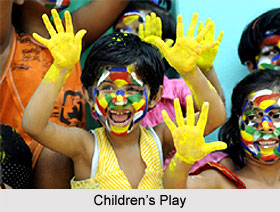 Forms of Kannada theatre involves various elements of modern Kannada theatre and amateur stage. While on one hand modern Kannada theatre draws inspiration from various sources like the folk theatre of Karnataka, and also from various regional theatres of India, amateur stage was set up to propagate the theatre culture in various parts of Karnataka. All through the history of Kannada theatre it is evident that western influences have played a crucial role towards development of Kannada theatre.
Forms of Kannada theatre involves various elements of modern Kannada theatre and amateur stage. While on one hand modern Kannada theatre draws inspiration from various sources like the folk theatre of Karnataka, and also from various regional theatres of India, amateur stage was set up to propagate the theatre culture in various parts of Karnataka. All through the history of Kannada theatre it is evident that western influences have played a crucial role towards development of Kannada theatre.
Theatre groups have played a major role in enhancing the prospects of the art in Karnataka. Many talented actors, directors and playwrights, who contributed in various ways towards the betterment of Kannada theatre, have made a mark for themselves. These theatre groups travelled to interiors of the state to mix with people and promote the essence of history, mythology and social issues through apt use of Kannada language. These theatre troupes also travelled to places outside Karnataka to make people aware of the theatre culture in the state.
Forms of Kannada theatre can be discussed in various aspects. Some of the significant forms of Kannada theatre are one act play, operas, dance drama, impromptu play, shadow play, radio plays, and theatre for children etc. Let us discuss each part in little detail.
 One-Act Play: One-act plays gained popularity. As a matter of fact, one-act play was successful in amateur stage theatre of Karnataka. The one-act is actually fact moving and direct play with short duration and few features like speedy action, economy in expression and a final impressive climax. A particular act detached from a full length play can not be a one-act. For the one-act is like a golden ring rather than a detached link of a gold chain. It should process a dramatic theme.
One-Act Play: One-act plays gained popularity. As a matter of fact, one-act play was successful in amateur stage theatre of Karnataka. The one-act is actually fact moving and direct play with short duration and few features like speedy action, economy in expression and a final impressive climax. A particular act detached from a full length play can not be a one-act. For the one-act is like a golden ring rather than a detached link of a gold chain. It should process a dramatic theme.
Operas: Operas were also a part of Kannada theatre. It is capable of portraying diverse emotions of different characters at the same time. This form was highly inspired from West and has music as its mode of communication. Kannada Operas, though small in number, have exhibited a high musical quality and have proved to be quite dramatic.
Dance Dramas: Close to the operas are the dance dramas. These dance performances are mainly based on certain themes. Just like Western ballet, the Dance drama also lays emphasis on gesture and dance to construe a theme; but the technique here may not be strictly classical as in Kathakkali though they bring home the full import of an emotion. In the present times, especially during the last two decades more and more young people are being trained in dancing and as a result the concept is getting popular with each passing day.
 Shadow Play: This is a very interesting experiment as an advanced technique in play production. Shadow play is just like every regular play with a particular story, theme and playing actors. But the actors present here are not one with flesh and blood, but only his shadow in black on the white screen.
Shadow Play: This is a very interesting experiment as an advanced technique in play production. Shadow play is just like every regular play with a particular story, theme and playing actors. But the actors present here are not one with flesh and blood, but only his shadow in black on the white screen.
Radio Play: It can be said that radio play has to direct link to professional stage theatre, but its indirect impact on the actors, composers, playwrights is undeniable. Over the last few decades the radio play theatre has grown by leaps and bounds, facilitating is bringing awareness among the people. With the usage of various themes from history, mythology and society, radio plays have grown in demand.
Children Theatre: This form of Kannada theatre has always been neglected in the past. However, constructive efforts are now being taken to promote children`s theatre in the Indian state of Karnataka. Some of the popular playwrights like Hoysala, Puttappa, Karanth Rajarathnam and Pandurangarao have greatly contributed to the children`s drama in Karnataka.
Impromptu Plays: These are plays which are new in the drama circuit of Karnataka. Hardly two decades old, are impromptu plays, mainly organized by members of Maharaja`s College of Mysore, and these were the first impromptu plays in Karnataka. These are enactments where actors are not required to rehearse and they give an impromptu performance. This is especially for busy professors who work round the clock and do not have the time to practise or indulge in rehearsal. The content, make up, performance and theme, all are discussed on the day of the performance. The details of the play and its duration depend entirely on the ingenuity of the actors who react according to the situation.




